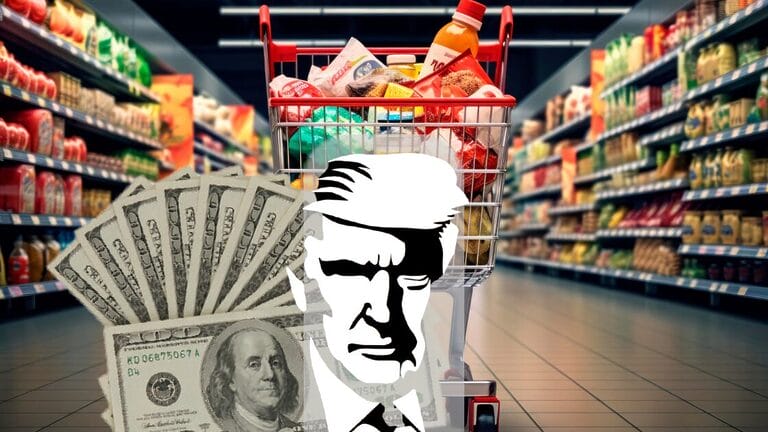The figure is not at all negligible, and the vast majority of American households will feel the impact of the Republican magnate's tariff policies in their pockets.
A study by the Tax Foundation revealed this Sunday that the new global tariffs driven by Donald Trump will result in an average increase of $1,121 per year in the spending of each American household. Although the government presents them as "taxes on importers," in practice they will directly impact consumers' wallets.
The bill will be paid by the average citizen.
The report warns that these tariffs "will reduce after-tax income by an average of 2.1%", resulting in the highest tax burden in over four decades. Neither Clinton's nor Obama's tax hikes reached that level.
Trump has imposed a base tariff of 10% on almost all imports, with even higher rates for countries with a trade surplus with the United States. This will affect everyday products coming from China, India, the European Union, Mexico, or Canada.
Although the White House maintains that these tariffs will protect the domestic industry, economists and analysts insist that it will be the consumers who pay the price, especially low-income families.
Direct blow to the poorest households
According to the Budget Lab at Yale University, low-income households will be the most affected, as they allocate a larger portion of their budget to basic consumption. Many may not be able to absorb the impact of price increases and could be forced to drastically reduce their consumption.
The situation recalls what happened in 2018, when Trump imposed tariffs on washing machines. According to subsequent studies, retailers not only raised the price of washing machines, but also that of dryers, even though the latter were not affected by the tariffs.
Tariffs of 20% or more: impossible to hide in prices
The Tax Foundation estimates that the average tariff rate will increase from 2.5% in 2024 to 18.8% in 2025, the highest level since 1933. This will result in an estimated drop of $900 billion in imports. In other words, the United States will import 28% less than in 2024, leading to shortages and higher prices.
Among the most affected products are those coming from Europe, which will face a 20% tariff, as well as technological or automotive products from Asia and Canada. Traders will have few options: pass on the extra cost to the customer, or lose profit margins.
Tax cuts in exchange?
Trump has promised to offset these taxes with a "big and beautiful law" of tax cuts. However, experts from the Tax Policy Center warn that the relief would mostly benefit households with incomes above $450,000 annually, leaving out a large part of the middle and lower class.
Expected impact: GDP decline and stagnation
The report also projects a GDP reduction of 0.5% in 2025 alone, as a result of lower consumption, contraction in imports, and the blow to investment. If the effects of the tariffs imposed in his first term are added, the cumulative impact would be 0.8%.
In addition, the expected revenue amounts to 3.2 trillion dollars over a decade, which helps to understand why this measure is considered the largest tax increase since Ronald Reagan's presidency.
Retaliatory tariffs and diplomatic tensions
As expected, China, Canada, India, and the European Union have responded with reciprocal tariffs. China has already announced a tariff of 34% on all U.S. products, and partial blockades on key exports such as rare minerals.
Experts fear that this trade war may become a vicious circle of retaliation, further damaging global trade, driving up prices, and slowing down economic recovery following post-pandemic inflation.
Continue reading in Directory News
Follow our channels of WhatsApp, Telegram y Facebook.
